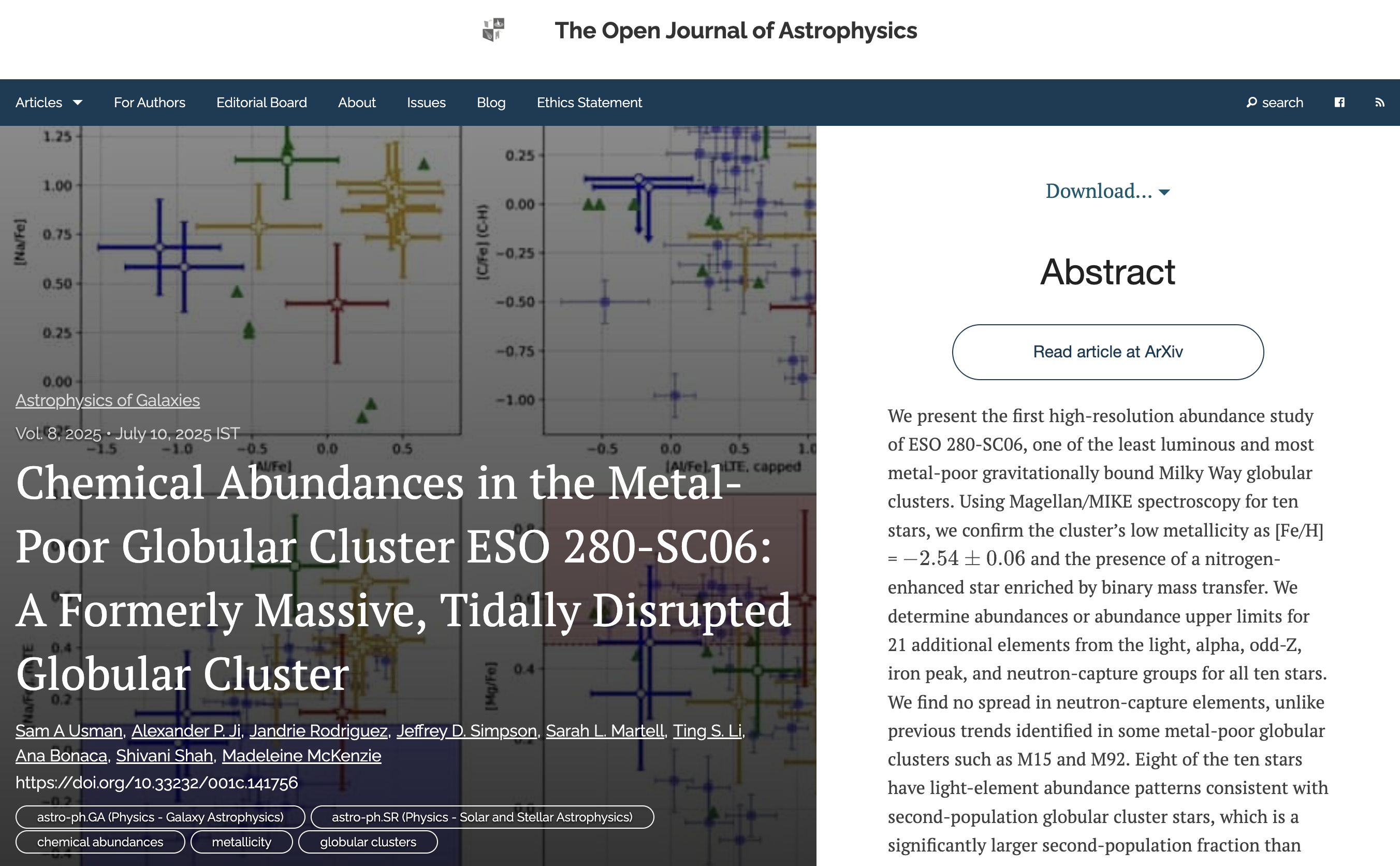
Chemical Abundances in the Metal-Poor Globular Cluster ESO 280-SC06: A Formerly Massive, Tidally Disrupted Globular Cluster
Sam A Usman, Alexander P. Ji, Jandrie Rodriguez, Jeffrey D. Simpson, Sarah L. Martell, Ting S. Li, Ana Bonaca, Shivani Shah, Madeleine McKenzie
I recently published a new paper in the Open Journal of Astrophysics!<\br> In this work, we observe and chemically tag ten stars in the most metal-poor intact globular cluster in our galaxy, ESO 280-SC06. We were specifically looking for “second-population” stars which contain a unique chemical imprint found only in globular clusters: enrichment in elements such as aluminum and sodium, and depletion in elements such as oxygen and magnesium.
We found the cluster has a 8 of the 10 observed stars were second-population, significantly higher than would be expected for a cluster of this mass, even when accounting for its initial mass and significant mass loss.
We suggest this is due to preferential stripping of first-population stars, as ESO 280-SC06 has lost (by my calculations) more than 95% of its stars. Since second-population stars are often concentrated towards the center of clusters, tidal forces would be more likely to rip away the first-population if the cluster hasn’t sufficiently mixed.
Does this sound confusing? Send me an email for more clarification, or read the full paper on the Open Journal of Astrophysics.
Chemical Abundances in the Leiptr Stellar Stream: A Disrupted Ultra-faint Dwarf Galaxy?
Kaia R. Atzberger, Sam A. Usman, Alexander P. Ji, Lara R. Cullinane, Denis Erkal, Terese T. Hansen, Geraint F. Lewis, Ting S. Li, Guilherme Limberg, Alice Luna, Sarah L. Martell, Madeleine McKenzie, Andrew B. Pace, Daniel B. Zucker
In addition to my paper on the intact globular cluster, a student that I mentored with my advisor Prof. Alex Ji published her first first-author paper earlier this year! In it, she analyzed four stars that I had observed in the Leiptr stellar stream. Based on the clusters metallicity dispersion and heavy metal enrichment, we determine that Leiptr is the smallest disrupted dwarf galaxy identified to-date! Read about it also on the Open Journal of Astrophysics!